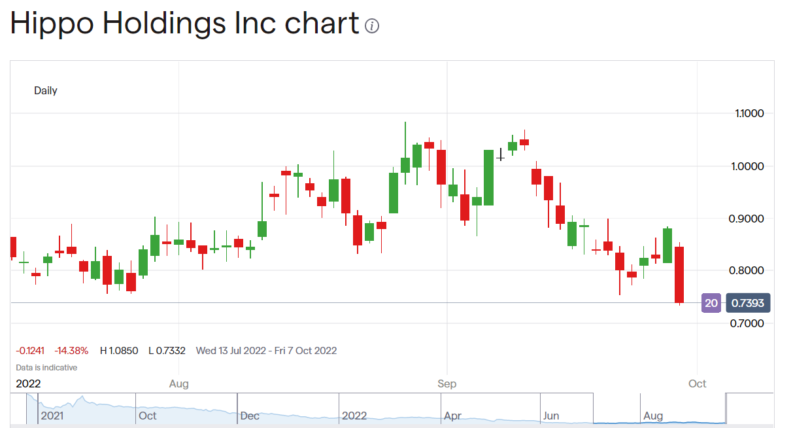Key points:
- Hippo Holdings should jump 2,500% today
- This will be a purely nominal price change
- The real price change will be the variance from that 2,500%
Hippo Holdings (NYSE: HIPO) should rise 2,500% this morning which will be a nice change for investors seeing as HIPO stock is down 83.7% over the past 12 months. Unfortunately, that 84% decline is a real destruction of value and the rise, that 2,500% predicted will be only a nominal price change. The real price change will be the variance from that 2,500%. The difference between nominal and real prices is important.
As to what Hippo does it's an insurance company. It largely deals with home protection insurance – fire, wind, theft, the usuals – and markets online, by phone and through agents. There is something of an oddity in this dismal performance for we'd expect an insurer to do well with rising interest rates. For there are two parts to the business – underwriting and investment performance. Sure, write an insurance policy, you've got to get the price right over the risk pool. Make sure that premiums in at least roughly match claims that have to go out over time. But that “over time” there carries a lot of weight. Because the insurance company gets to invest that cashflow until those claims arrive.
Those investments should be in something pretty liquid, easy to cash in and so on. Which generally means bonds, often enough Treasuries. As interest rates rise so do the returns on such holdings. Rising interest rates mean insurers should do better. Against that we've got to set the effects of inflation – when that's at 8% or so then the claims are going to come in higher than they were thought to be when the premiums were set.

Also Read: What Would Warren Buffett Invest In Now?
But Hippo has not been doing well and the stock price has fallen below the $1 minimum to retain an NYSE listing. The solution to that – in the absence of being able to turn the business performance around – is to have a reverse stock split. A consolidation as the Brits call it. Simply declare that 25 shares yesterday are one today. This shouldn't – directly – change the value of the company as a whole nor of any individual holding in it. It's a purely nominal change in the denominator, the number of pieces of paper which make up the ownership of the company. 25 for 1 is the Hippo reverse stock split, so the price should rise 2,500% as it comes into effect today.
The real price change will be whatever the variance is from that 2,500%. It's possible to think that retaining the NYSE listing makes the company more valuable. But it has to be said that it doesn't always work that way. Sometimes the greater liquidity leads to more selling which isn't the point at all from the corporate viewpoint.
As to why the NYSE rule, that's just fashion. New York markets simply think – as a fashion now hardened into a culture – that the right price for a good and solid stock is in the $10 to $100 range. That it is fashion is shown by London thinking that £1 to £10 is. The implication of this is that penny stocks are not quite right somehow and so are relegated to the OTC markets. Thus the game of keeping the HIPO stock price above $1 – to retain the NYSE quote and not be relegated to the OTC markets.
